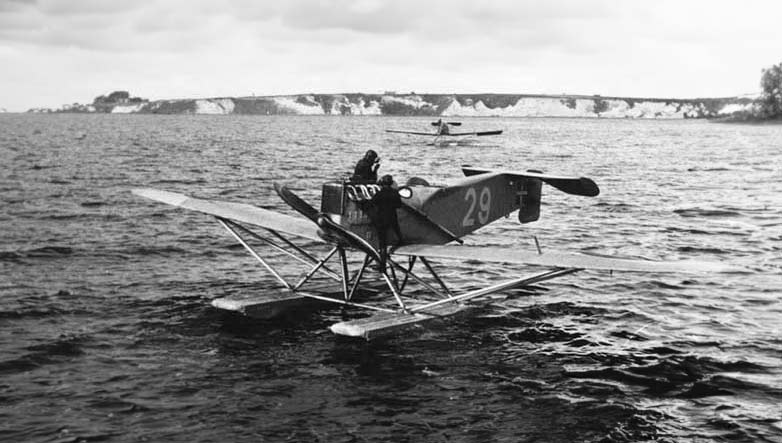Hansa-Brandenburg W.29: WWI German floatplane, noted for its monocoque design, armed with forward-firing machine guns and potent for reconnaissance. The Hansa-Brandenburg W.29 was a World War I German monoplane floatplane designed primarily for coastal patrol and reconnaissance missions. Its innovative design and armament proved effective against both sea and air targets, making it one of the most successful floatplanes of its time.
In the realm of military aviation during World War I, floatplanes held a unique position as extensions of naval power, providing crucial reconnaissance and engaging in combat. The Hansa-Brandenburg W.29 was developed to meet the specific needs of naval aerial operations, particularly for the German Imperial Navy.
History of the Development of the Hansa-Brandenburg W.29
During the epoch of World War I, aerial warfare was rapidly evolving, and the need for specialized aircraft became apparent. The German Imperial Navy required an aircraft capable of long-range reconnaissance and possessing the ability to defend itself against enemy aircraft. The objective was to create a floatplane that could patrol the North Sea coastlines and report on Allied naval movements, as well as engage enemy seaplanes.
The program for the W.29 was initiated by the German aircraft manufacturer Hansa-Brandenburg, led by the innovative designer Ernst Heinkel. The development aimed to produce an aircraft that could outperform the slower, less maneuverable floatplanes then in service.
Design of the Hansa-Brandenburg W.29
The W.29 was a monoplane floatplane with a length of 9.15 meters (30 feet) and a wingspan of 13.51 meters (44 feet 4 inches). Its design featured a pioneering monocoque fuselage, constructed without the traditional framework, resulting in a lighter and more aerodynamic structure.
The aircraft was equipped with two floats for stability on water, which, while necessary for operations, did introduce drag that slightly reduced overall performance. However, the streamlined design mitigated this effect as much as possible.
One of the design advantages was the cantilever wing, which did not require external struts or bracing, reducing drag and maintenance complexity. The W.29 was also one of the early adopters of using light, molded plywood in construction, which contributed to its robustness and durability.
However, the aircraft’s design also had drawbacks. The float design was less forgiving during rough sea conditions, and the relatively exposed position of the crew made them vulnerable to the elements and enemy fire.

Performance of the Hansa-Brandenburg W.29
The Hansa-Brandenburg W.29 was powered by a single 150 kW (200 hp) Benz Bz.IIIbo engine, enabling a maximum speed of 177 km/h (110 mph) and a cruising speed of approximately 158 km/h (98 mph). It had a service ceiling of around 3,000 meters (9,840 feet) and a range of up to 440 kilometers (273 miles).
When compared with Allied floatplanes like the Felixstowe F.2, the W.29 was notably faster and more agile, allowing it to escape or chase down its adversaries effectively.
Military Use and Combat of the Hansa-Brandenburg W.29
The W.29 was armed with two synchronized 7.92 mm LMG 08/15 machine guns firing forward and sometimes included a rear-facing gun of the same type for defense. Its combat role was mainly reconnaissance but it was also involved in skirmishes with Allied aircraft and naval vessels.
The W.29 saw considerable use in the North Sea where it performed admirably, especially in engagements with British flying boats. Although it entered service late in the war, it proved to be a thorn in the side of the Allies, with notable effectiveness in disrupting the work of enemy seaplanes.
After the war, the W.29 was not sold to other countries due to the restrictions imposed by the Treaty of Versailles. Its production and operational use ceased, and it was not directly replaced by another aircraft, as the Treaty greatly limited Germany’s military aircraft development.
The Hansa-Brandenburg W.29 remains a testament to innovative aircraft design and specialized military application during World War I. Its contributions to the German Imperial Navy’s capabilities demonstrated the importance of airpower in maritime operations, setting precedents for future seaplane designs. Despite its brief service, the W.29’s design principles and combat performance left an indelible mark on the evolution of military aviation.
Back to the Seaplanes section.